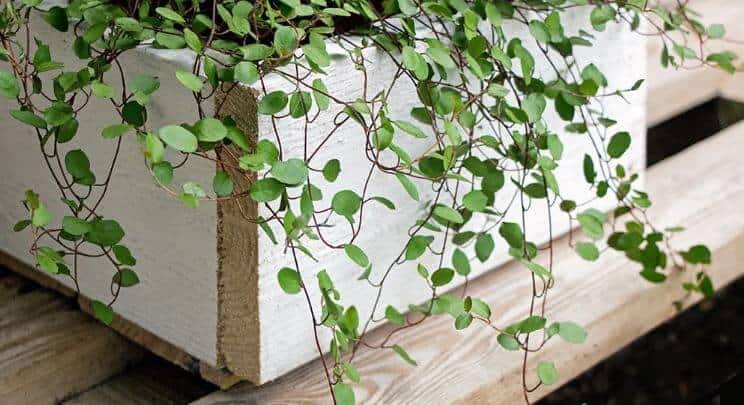Last Updated on March 11, 2023 by a Friendly Gardener
Botanically named the Muehlenbeckia complexa, this lovely houseplant is a New Zealand native that is a delight whether cultivated indoors or outside. It has an appearance that can best be described as a wiry vine graced with delicate smallish foliage.
The Muehlenbeckia complexa has several popular names including the ‘Creeping Wire Vine’, the ‘Maidenhair vine’, ‘Mattress Vine’, ‘Wiggy Bush’, ‘Pohuehue’, and the Angel Vine plant. It belongs to the Polygonaceae family. The genus Muehlenbeckia contains approximately 24 flowering species alone.
In their native habits which include mountains, coastal, and lowland areas, this plant exercises an important ecological role. They can suppress weeds and seal disturbances to their environment, and they encourage insect diversity. The plant’s buds are also a source of food for a variety of volatiles while the Māori peoples consume their sweet flowers. Flowers are also pleasantly fragrant.
Foliage is green, round, and small, although you may find varying shapes on the same vine. Vivid green leaves emerge from reddish-brown stems. This plant can be shown off in hanging baskets or be trained to climb on trellises or topiaries, meaning you can even create a specific shape that you want for your garden with florist’s wire or similar.
The Angel Vine Plant Outdoors

This evergreen shrub plant makes a lovely ground cover when cultivated in warmer climates such as California and will flower in the summer season. Leaf axils host clusters of tiny dioecious flowers. Flowers then develop into somewhat transparent juicy fruits with triangular black seeds inside. But to flower, these plants require ample sunlight, so an indoor plant may not flower like those grown outside.
When left to its own devices outside, the plant can become a bit weedy and present difficulty if you want to remove it. It can grow to lengths of fifteen feet and present a dense growing habit of entwined branches. Foliage may also be sparser. Stems are woody and tough and can grow on rocks, or other vegetation. If this vine finds no alternative support, it may grow and climb on itself.
Angel Vine Plant Care
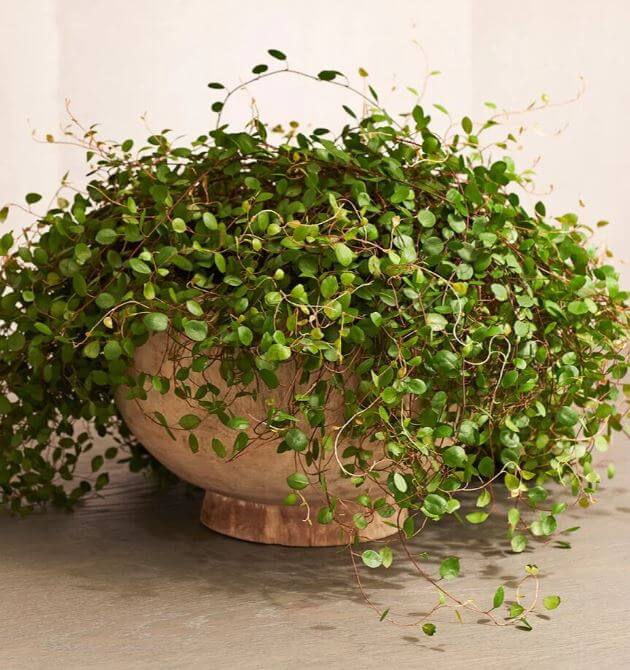
An indoor Angel Vine plant will be especially attractive when cultivated in hanging pots or on high shelves that accentuate its vining growth habit. It can generally grow to a height of approximately eight inches but will sprawl as much as two to three feet if it is not pruned.
Soil
A good quality potting mix is perfect if you want your Angel Vine plant inside. A lightweight, quick-draining growing medium is your best choice.
Light
The Angel Vine houseplant likes full direct sunlight to partial shade. If you notice that foliage is a bit sparse, it needs more sunlight. If you do not have an appropriate windowsill, consider moving it to a balcony, porch, deck, or patio during the summer season. You can also opt to use artificial growth light to ensure your plant receives adequate light.
Water
When the soil bed is dry to at least an inch deep, water your plant. Reduce watering in the winter as the soil should be allowed to dry to about a third of the pot deep. If this plant is overwatered and left to sit in soggy soil, expect foliage to begin yellowing.
Humidity
Average household humidity levels measuring about 40% are fine.
Temperature
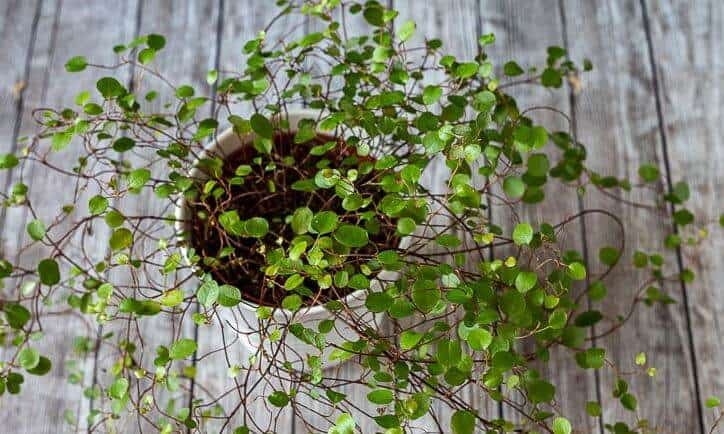
The Angel Vine plant needs a warm environment year-round. It should not be exposed to extreme temperatures whether hot or cold. The ideal environmental temperature will measure in the range of 65° to 80° F. Protect your plant from cold drafts from doors or windows. It should also not be subject to air blasts from heating or air condition units or vents. When placed outside, Angel Vines can die off when exposed to frost.
Feeding
Not a heavy feeder, the Angel Vine plant will do fine with monthly fertilization during spring, summer, and fall. Use a liquid fertilizer that has been diluted to half the amount recommended on the package. Do not feed your plant during winter when it rests.
Pruning
As a rapid grower, the Angel Vine plant will need to be trained or shaped. To stimulate branching, prune new growth regularly and then train as the new branches develop. If you prefer compact plant growth, prune a third of your Angel Vine plant when spring arrives.
Repotting an Angel Vine Houseplant
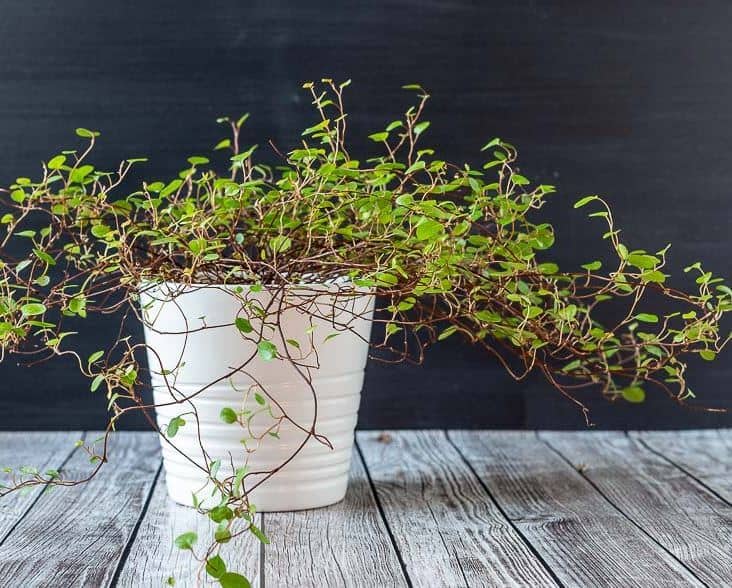
Plan on repotting your plant once every other year in a pot that is one size bigger with a fresh growing medium. Pots must always have an adequate number of drainage holes to ensure that the soil bed does not grow soggy.
Angel Vine Plant Propagation
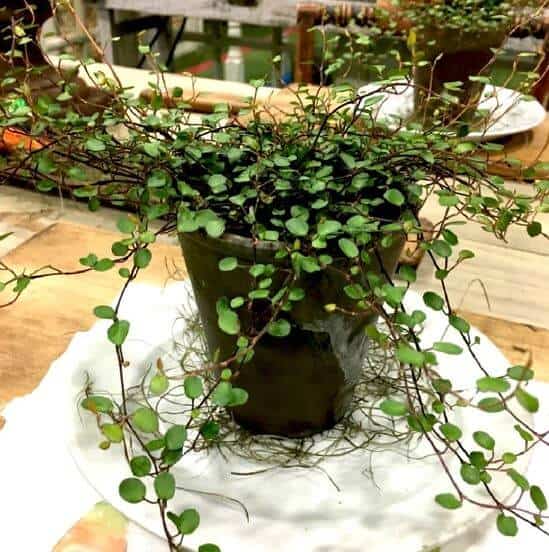
Stem cuttings are the perfect way to propagate your Angel Vine plant. Snip a cutting of three to four inches in the springtime. Place the cutting in fresh growing medium and water. Be patient. To improve your chances of success, dip the cut end of your cutting in root hormone before placing it in the soil.
Angel Vines can also be propagated with seed, but you’ll need more time and to be patient. Once a flowering Angel Vine has matured its blossoms into fruits, seeds can be harvested from inside the fruits and then planted in potting mix. With sun and regular watering, you should see new growth relatively quickly.
Pests and Problems
If you do decide to cultivate an Angel Vine houseplant, keep an eye out for pest infestations. This plant will be susceptible to common houseplant pests and in particular aphids. If you notice evidence of pest permanence, consider rinsing or spraying your plant with a jet of water to remove intruders. Treat your plant afterward with Neem oil which is an organic insecticide and fungicide that does not harm people or pets.
Overwatering or leaving your plant standing in soggy soil can be fatal. Yellowing foliage is generally a sign of excessive moisture.
Angel Vine Houseplant Toxicity
The Angel Vine plant is toxic to humans and pets, so it’s best to keep this vining plant securely out of reach.

